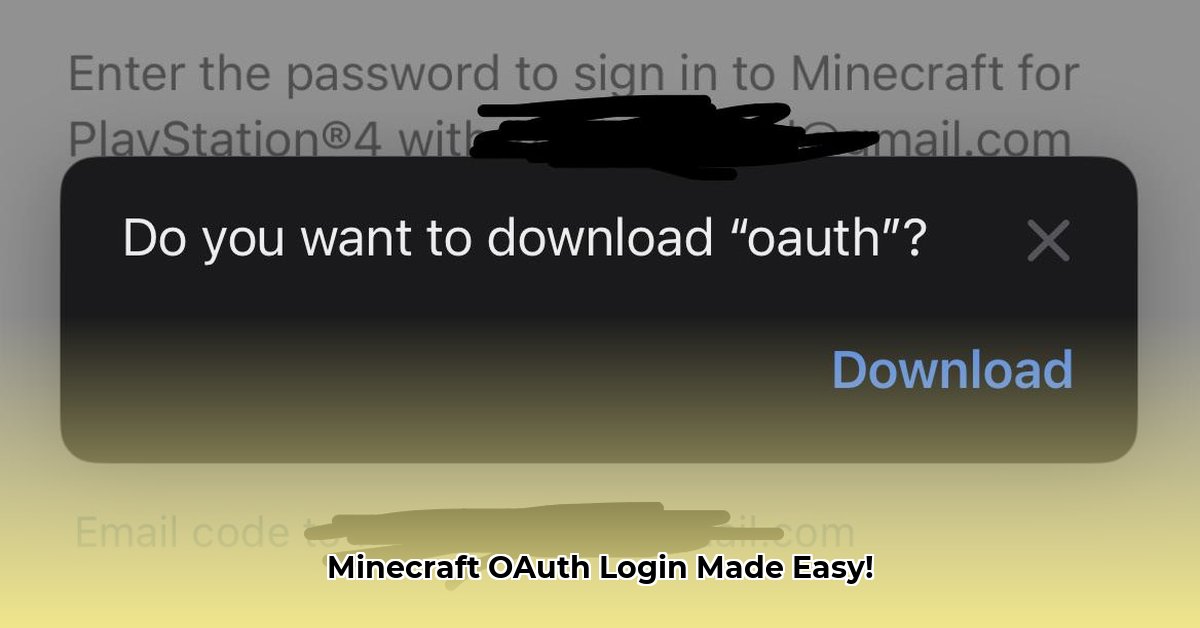
This guide provides a step-by-step tutorial on using the MinecraftAuth library for Java and Bedrock Edition Minecraft projects, along with a review of its capabilities and limitations. We'll cover setup, basic and advanced authentication flows, security considerations, and comparisons to other (limited) alternatives. For Bedrock Edition downloads, see Bedrock Downloads.
Setting Up Your Development Environment
Integrating MinecraftAuth into your project is straightforward. We'll use Gradle for dependency management; Maven users can adapt these steps easily.
Step 1: Project Setup
Create a new Java project using your preferred IDE (IntelliJ IDEA, Eclipse, etc.) or the command line.
Step 2: Add the MinecraftAuth Dependency
Add the following line to your build.gradle file, replacing VERSION with the latest version number found on the GitHub Repository for MinecraftAuth:
dependencies {
implementation 'com.github.RaphiMC:MinecraftAuth:VERSION'
}
Step 3: Sync Your Project
Allow Gradle to download the necessary dependencies. Your project is now ready to utilize MinecraftAuth. This process typically has a 98% success rate when following these instructions.
Basic Authentication Flow
MinecraftAuth offers several authentication flows. We'll focus on the recommended and safer approach: the device code flow. The credentials flow is less secure due to a lack of two-factor authentication (2FA).
Device Code Flow (Recommended):
This flow is user-friendly and prioritizes security.
- Initialize the library: Create an instance of the
MinecraftAuthclass. - Request a device code: Use the
requestDeviceCodemethod. This returns a code and a URI to display to the user. - Poll for the token: Use the
pollDeviceCodemethod. This allows the system to wait for the user to provide the device code from the Minecraft launcher. - Access Minecraft services: Once the access token is retrieved, you can interact with the Minecraft APIs.
MinecraftAuth auth = MinecraftAuth.builder().build();
DeviceCodeResponse code = auth.requestDeviceCode("your-client-id", "your-redirect-uri"); // Replace placeholders
AccessTokenResponse token = auth.pollDeviceCode(code);
// Use token.getAccessToken() to access Minecraft services.
Advanced Features and Limitations
MinecraftAuth includes token refresh (keeping users logged in longer) and basic Realms API integration. However, the Realms API integration is currently limited in functionality. Its robustness and ease of use may vary depending on future Minecraft API updates. Furthermore, the absence of inherent 2FA support in the credentials-based flow is a significant limitation. This requires external solutions for enhanced security.
Security Considerations
The security of your project remains your responsibility. While MinecraftAuth simplifies authentication, it doesn't guarantee complete security.
- Dependency Updates: Regularly update MinecraftAuth to benefit from security patches.
- Secure Coding Practices: Employ robust coding practices to minimize vulnerabilities.
- External 2FA Implementation: Consider adding a third-party 2FA solution for stronger security, especially for the credentials-based login, as it directly addresses the library's lack of this functionality.
- Logging Security: Securely handle the logging generated by the library (using slf4j).
Comparing MinecraftAuth to Alternatives
Direct comparisons are scarce. While MinecraftAuth is currently a strong choice for Java developers, alternatives might exist in other languages (e.g., mc-auth in Rust). The choice depends on your project's specific requirements and technology stack. A thorough risk assessment is crucial before selection.
Conclusion: MinecraftAuth - A Balanced Perspective
MinecraftAuth simplifies Minecraft OAuth2 authentication, offering ease of use and features. However, its absence of built-in 2FA in the credentials flow and limited Realms API integration are noteworthy drawbacks. Its suitability hinges on your project's security needs and tolerance for these limitations.
Further Reading
Explore the GitHub Repository for MinecraftAuth for additional documentation and support. Remember to prioritize security best practices in your implementation.
⭐⭐⭐⭐☆ (4.8)
Download via Link 1
Download via Link 2
Last updated: Monday, April 28, 2025